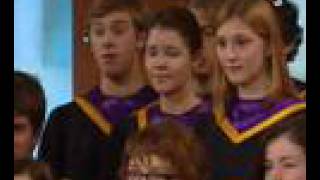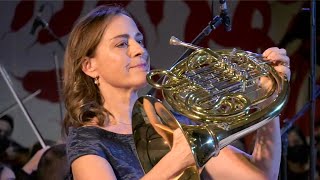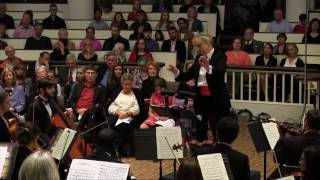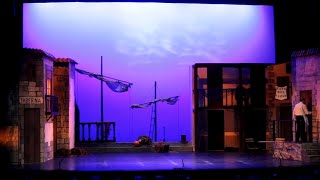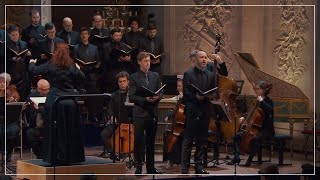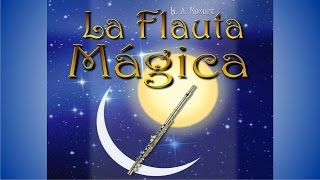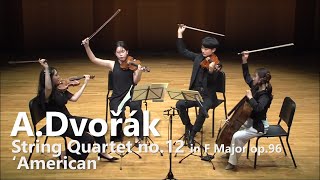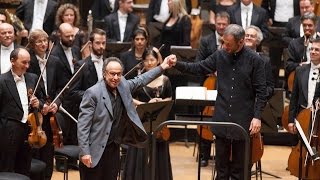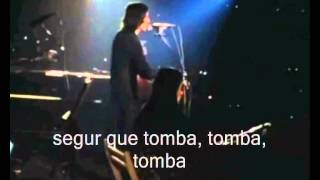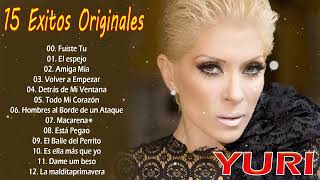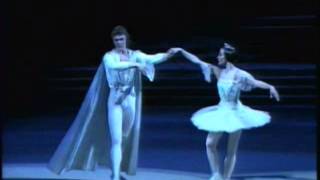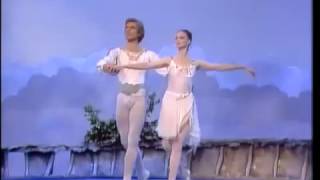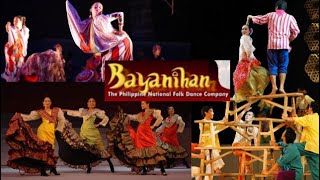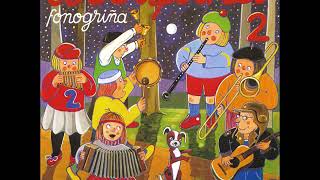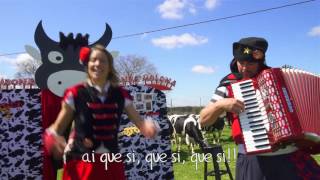On September 11th, the Diada (Catalonia's National Day) is celebrated.
The National Day of Catalonia, or simply the Diada, is the national holiday of Catalonia celebrated every year on September 11th. Its significance is primarily commemorative and reivindicative, commemorating the fall of Barcelona in 1714, during the War of the Spanish Succession. In that war, Catalonia supported Archduke Charles of Austria against Philip of Bourbon. After the war, Bourbon troops occupied the city, and King Philip V abolished Catalan institutions through the Nueva Planta Decrees, which many Catalans consider the beginning of a loss of self-government and historical freedoms.
Its current celebration honors those who defended the freedoms of Catalonia during the siege of 1714 on a day of strong political content, especially in support of the right to self-determination and Catalan independence. With these objectives in mind, official events, floral offerings (especially at the Fossar de les Moreres, a symbolic site in Barcelona), concerts, and large-scale demonstrations organized by organizations such as the ANC (Catalan National Assembly) are held. All of this takes place within a solemn and festive atmosphere, combining cultural celebrations, popular activities, and expressions of Catalan identity such as human towers, sardanas, and traditional music.
Recommended music videos for initiation to classical music
Enric Morera i Viura (1865 - 1942) was a Catalan composer and musician. He wrote operas, stage music, symphonic works, choral works, concertos, and a Requiem Mass; but he is best known for his choral sardanas. His work is part of the neo-romantic aesthetic and is a magnificent example of Catalan musical nationalism. So much so, that he wrote everything concerning tempo, dynamics, agogic, etc. in Catalan (instead of Italian). It is also noteworthy that he did not use a key signature in his songs. All alterations are accidental, opting for this form of writing, like other composers of his time. Enric Morera 's personal collection is preserved in the Library of Catalonia .
L´Empordà is a sardana with music by Enric Morera and lyrics by Joan Maragall, written in 1908 at the request of the Amics Tintorers choir of Barcelona as a gift for the Erato Choral Society of Figueres . It is a sardana for male choir with an energetic rhythm, although it is frequently covered in a mixed choir, as in the present case, sung by the university choir Knox College Choir . It has been the official anthem of the Alt Empordà region since 2012.
Wolfgang Amadeus Mozart (1756-1791) is considered one of the three giants of musical composition, along with Bach and Beethoven . A child prodigy born in Salzburg , Austria, he mastered the keyboard and violin at the age of six and began composing. His father, Leopold , exhibited him on exhausting tours of various European courts. A prolific composer (more than 600 works written between the age of five and his death), he cultivated all kinds of musical genres: piano works, chamber music, symphonies, concertante works, choral works, operas... each and every one of them a masterpiece of their kind. His operas The Magic Flute, Don Giovanni, Così fan Tutte, and The Marriage of Figaro are among the 10 most performed operas in the world. He died in Vienna at the age of 35.
The catalogue of Mozart's works or Köchel Catalogue ( Köchel Verzeichnis, in German) was created by Ludwig von Köchel in 1862 and lists the musical works composed by Wolfgang Amadeus Mozart . Each of Mozart 's works is designated by a number preceded by the abbreviation K. or KV ; this number designates the chronological order of its creation and which is actually valid for most of the works; however, in its first edition, works by other authors appear erroneously attributed to Mozart , and other authentic works that had not yet been discovered are omitted.
Horn Concerto No. 1 in D major, K. 412 by Wolfgang Amadeus Mozart. Written in 1791, the work is in two movements. It is the only one of Mozart 's four horn concertos in D major (the rest are in E flat major ) and the only one with only two movements instead of the usual three. Although numbered first, it was actually the last of the four concertos to be completed.
Today we offer the second movement of this concert, RONDO ALLEGRO, performed by American horn player Sarah Willis, accompanied by the Havana Lyceum Orchestra, conducted by its principal conductor, Cuban maestro José Antonio Méndez Padrón.
Gioachino Rossini (1792-1868) was an Italian composer of 39 operas, various songs, some piano works and some sacred music. He began composing at the age of 12. In 1812 he was engaged by La Scala in Milan where he achieved memorable success with "La piedra di tocca" ; the following year he premiered his first serious opera, Tancredi , in Venice and soon after another great success, L'italiana à Algiers . In 1815 he settled in Naples where he wrote regularly and without the stress of regulated rehearsals and dates. In 1822 he moved to Vienna where he met the admired Beethoven . From Vienna to London , back to Paris and after the premiere of his last opera, William Tell , he abandoned opera at the age of 37 at the height of his economic and popularity boom. He died at the age of 77.
An overture is the instrumental introduction to an opera or other dramatic work, musical or otherwise; although some independent instrumental compositions of the 19th and 20th centuries were also called overtures by their composers. The earliest operas, dating from the early 17th century , did not have overtures but did have an introduction by the vocalists summarizing the action that was to follow. Instrumental introductions came into common use from the mid- 17th century ; the German composer Christoph Willibald Gluck was one of the first to use material from his operas for overtures. In this way, the overtures established the emotional tone of the opera that followed.
La scala di seta (The Silk Ladder) is a one-act comic farce with music by Gioachino Rossini and an Italian libretto by Giuseppe Maria Foppa . It premiered at the Teatro San Moisè in Venice on 22 May 1812. In Spain it premiered in 1823 at the Teatro de la Santa Cruz in Barcelona .
Today we offer its Overture performed by the McLean Orchestra conducted by American maestro Miriam Burns
Pablo Sorozábal (1897-1988) was born in Donostia/San Sebastián , according to his own memoirs, “into a proletarian, Basque-speaking family”. He began his violin studies at the San Sebastián Municipal Academy of Music ; at 17, he joined the San Sebastián Casino Orchestra, and at 21, the Madrid Philharmonic Orchestra . With a scholarship from the Gipuzkoa Provincial Council, he completed his studies in Leipzig and Berlin . Due to his republican ideas, after the Civil War , he was isolated as a composer, which made it difficult for him to premiere the various zarzuelas he composed in Madrid . His tenure as director of the Madrid Symphony Orchestra ended on bad terms in 1952 when he was forbidden to play Shostakovich 's Leningrad Symphony , an event that led to his resignation.
La Tabernera del Puerto is a zarzuela in 3 acts with music by Pablo Sorozabal and libretto by Federico Romero and Guillermo Fernández-Shaw ; it premiered on April 6, 1936 at the Tívoli Theatre in Barcelona . The action takes place in the port of the imaginary city of Cantabreda . In the port is Marola 's tavern; nobody knows anything about its origin, it is only known that the tavern was financed by the bandit Juan de Eguía , whom everyone believes to be her husband. Marola and Leandro fall in love and Marola confesses to Leandro that Juan de Eguía is her father, after which they will have to go through various vicissitudes.
Today we attended the performance offered by the professional lyrical company of Andalusia, the Andalusian Lyrical Theatre .
Recommended classical music videos
Jean-Philippe Rameau (1683–1764) was a French composer, harpsichordist, and music theorist. He was highly influential during the Baroque era, replacing Jean-Baptiste Lully as the dominant composer of French opera. Rameau 's lyric works constitute the bulk of his musical contribution and mark the height of the French Baroque period with his best-known work, the opera-ballet Les Indes galantes . However, his lyric works were largely forgotten until the mid- 20th century , as a result of the rediscovery of early music; his harpsichord works were always present. Rameau is generally regarded as the most important French musician of the pre-19th century ; he died in 1764 at the age of 81.
The motet (from the French motet, and this from mot: 'word, nickname') is a polyphonic composition originating in the 13th century to be sung in churches with commonly biblical themes. These were songs for religious worship in Latin for four voices and " a cappella " (without instruments). Until the 17th century, it was one of the most important forms of polyphonic music. From the Baroque period (1600–1750), the word motet was also applied to sacred compositions written for one or more voices with instrumental accompaniment.
In convertendo Dominus (When the Lord returned [the captivity of Zion]), sometimes called In convertendo , is a setting by Jean-Philippe Rameau of In convertendo Dominus , the Latin version of Psalm 126. It is one of four surviving church works from Rameau 's early career, dating from the period 1710–1714 when he was working in Dijon or Lyon ; other similar works are known to be lost. The work was rewritten and updated in style for a performance at the Concert spirituel in Paris in 1751. The motet is scored for soloists, choir, strings, and woodwind instruments.
Today it is offered to us by Marie Perbost (Soprano), Samuel Boden (Tenor), Zachary Wilder (Tenor) Victor Sicard (Bass) with Le Concert d'Astrée Choir and Orchestra all conducted by the French maestro Emmanuelle Haïm .
Mozart and Freemasonry . Freemasonry emerged in Europe in the late 17th century as a selective, philanthropic organization with a federal structure and humanistic objectives, such as the search for truth, the study of human behavior, the sciences and the arts, and the social and moral development of individuals and society; all based on a sense of brotherhood, whose teachings are symbolized by elements of masonry. At the age of 28, Mozart entered the Masonic Lodge of Vienna as an apprentice ; the following month he rose to the rank of Companion , and four months later he was named Master Mason . Influenced by the Enlightenment , he pursued rationalism, although without sharing the occult nature of many of his companions.
The Magic Flute ( Die Zauberflöte ) is an opera that premiered in Vienna , conducted by Mozart himself, two months before his death. The libretto was written by a fellow member of his Masonic lodge, Emanuel Schikaneder , with a plot that focuses on the struggle between good and evil, light and darkness, knowledge and ignorance; all fundamental approaches to Masonic doctrine. The story is replete with Masonic symbolism in the characters, the action, and even the musical structures, beginning with the first sounds of the orchestra: three orchestral notes that reflect the three taps the Masonic candidate makes at the door to request admission.
Today we offer the entire opera with Spanish subtitles by Austrian maestro Franz Welser-Möst.
Antonín Dvořák (1841-1904) was born in Nelahozeves , then Bohemia , now the Czech Republic , and is considered one of the great masters of the second half of the 19th century and a leading exponent of Czech nationalism. Between 1892 and 1895, Dvořák was director of the National Conservatory in New York ; from his arrival in the USA he showed a great interest in Native American music. In April 1895 he left the United States and returned permanently to his homeland, where he resumed his work as a professor at the Conservatory. Throughout his life he wrote music for piano, violin and piano, trios, quartets, quintets, a sextet, two series of Slavic dances, serenades, suites, overtures, three rhapsodies, five symphonic poems, nine symphonies, several concertos, 100 songs and vocal duets, and several operas. His New World Symphony is a well-known work and its themes have been widely used in popular music.
Catalogue of Dvořák 's works . His works are classified by their Opus number (from the Latin opus 'work'; op. abbreviation), which is a term used in music to catalogue the works of most composers since the 17th century .
A string quartet is a musical ensemble of four string instruments, usually two violins, a viola, and a cello, or a piece written to be performed for such an ensemble. The string quartet is widely regarded as one of the most important forms of chamber music , given that many of the renowned composers from the 18th century onward wrote works for string quartet ; the composition is traditionally structured in four movements.
String Quartet in F major, Op. 96, nicknamed the American Quartet , is the twelfth string quartet composed by Antonín Dvořák in 1893, during his stay in the United States . The Quartet is one of the most popular in the chamber music repertoire and is scored for the usual ensemble of two violins, viola and cello, and consists of four movements: I (0´02´´) ALLEGRO MA NON TROPPO. The opening theme of the quartet is purely pentatonic, played by the viola, with an undulating F major chord in the accompanying instruments .-. . II (6´55´´) LENTO. The second theme, in A major, is also mainly pentatonic, but embellished with melismatic elements reminiscent of Gypsy or Czech music, and is the theme that performers have most often tried to associate with a Negro spiritual or Native American melody. The simple melody, with its pulsating accompaniment in the second violin and viola, is indeed reminiscent of Hindu spiritual or ritual music. It is written using the same pentatonic scale as the first movement, but in the minor mode ( D minor ). III (13:44) Molto Vivace. The third movement is a variant of the traditional Scherzo . It is in the form A–B–A–B–A : the A section is a lively, somewhat peculiar melody, full of strange cross-rhythms. The B section is actually a variation on the main theme, played in a minor mode, at half tempo, and more lyrical. IV (17:42) Finale: Vivace Ma Non Tropo. The final movement is in traditional rondo form, A–B–A–C–A–B–A. Once again, the main melody is pentatonic. The B section is more lyrical, but continues in the spirit of the first theme, and the C section is a choral theme.
Today it is offered to us by the quartet made up of Seobin Baek (First violin), Jimin Lee (Second violin), Sangmin Shin (Viola) and Gaeun Lim (Cello).
Today we're joined by Benet Clasablancas (1956), a composer born in Sabadell , Catalonia. He studied in Barcelona and Vienna, earning his doctorate in musicology, and from an early age he loved combining teaching with research, as well as composition. In 2002, he took over as director of the Liceu Conservatory in Barcelona . His works are a marvel of balance, perfectly blending form with expressiveness, with an uncomplicated harmonic language and a timbre created through his masterful orchestration. Numerous prestigious international ensembles have commissioned works from him, and he thus shines as an international maestro. The Generalitat (Generalitat) awarded him the Music Prize in 2007, the highest award granted by the region, and in 2013, the Ministry of Education awarded him the National Music Prize .
An interlude (from Latin inter ludĕre, to play intermittently) is a piece or musical passage performed between two parts or sections of a single work. During the 18th century , such passages were inserted between verses of hymns or psalms; in the latter case, organists often improvised them. Written examples of this type survive today. Occasionally, they may appear between scenes in an opera, as with the " Sea Interludes " in Benjamin Britten 's 1945 opera Peter Grimes , although they can also be conceived as independent pieces.
Today we will watch Casablancas' Three Interludes for Orchestra , a 2011 composition commissioned by the Vallès Symphony Orchestra and dedicated to Rubén Gimeno . The composition blends drama with mystery, all with a general atmosphere full of charm. Casablancas makes very special use of timbres, with the instrumentation being a very important element of the work, full of colors and nuances. THE FIRST (0:35) PASTORALE (TRANQUILO) is full of delicate sounds .-. THE SECOND (6'08'') is the SCHERZO (CON MOTO) and contrasts with the previous one because it is full of strength and energy .-. THE THIRD (10'38'') MEMENTO E CORALE (LENTISSIMO, AMPLIO E TENUTO) , whose indication says it all because in this part we find nobility and a very special mystery. (Excerpt from the article in Religión Digital )
The performance is by the Galicia Symphony Orchestra conducted by Russian maestro Dima Slobodeniouk .
Recommended music videos for all tastes
Lluis Llach (1948) is a Catalan singer-songwriter who, along with other colleagues, promoted the Nova cançó catalana (Catalan New Song) and composed several protest songs during the Franco era. In 1969, he gave a solo recital at the Palau de la Música, demonstrating his popularity among people of all ages. In 1973, he performed at the Olimpia in Paris to great critical and popular acclaim; during this period, he also performed in Switzerland, Germany , and Mexico . In 1976, after Franco 's death, he gave three recitals at the Montjuïc Sports Palace. In 1979, he became the first non-operatic singer to perform at the Liceu in Barcelona , and in 1985, he filled the Camp Nou with over 100,000 spectators. In 2007, he decided to end his career with a concert in Verges (Girona).
L'estaca (" The Stake ") is a song composed in 1968 by Lluís Llach . This song, which has been translated into a multitude of languages, has become so popular that in many places it is considered indigenous (even the Polish trade union Solidarity adopted this song as its anthem). It was composed during the Franco dictatorship in Spain and is a call for unity of action to free ourselves from our bonds and achieve freedom. It has become a symbol of the fight for freedom. "Don't you see the stake to which we are all tied? If we can't get rid of it, we'll never be able to walk! ... If I pull hard here and you pull hard there, surely, grave grave grave, we'll be able to free ourselves."
Louis Armstrong (1901-1971), also known as Satchmo or Pops , was an American jazz trumpeter and singer. He is one of the most charismatic and innovative figures in the history of jazz and probably its most popular musician. Thanks to his musical abilities and his brilliant personality, he transformed jazz from its initial status as dance music into a popular art form. Although at the beginning of his career he cemented his fame primarily as a trumpeter, it would later be his status as a vocalist that would establish him as an internationally recognized figure and enormously influential in jazz singing.
Paloma Mami (Manhattan, New York; November 11, 1999) is a Chilean-American singer and songwriter, who rose to popularity in 2018 after releasing her first single " Not Steady ", after appearing on the talent show Rojo . In March 2021, she released her first studio album Sueños de Dalí . She studied in her native country and at the age of 8 she began to venture into music, recording and playing the electric piano, as well as taking painting and drawing workshops, all this until the age of 16, when she moved to Chile . It was in high school that she acquired her stage name " Paloma Mami ". In January 2019, she reached 3.2 million monthly listeners on Spotify , becoming the most listened to Chilean singer on that platform, surpassing the previous mark of 3.1 million set by Mon Laferte . His musical style is primarily Latin R&B and soul , incorporating elements of urban pop with a mix of Latin trap .
Yuri (1964) is a Mexican singer, actress and television presenter. Her vocal quality and versatility allow her to interpret different musical genres, such as pop, ballad, dance, ranchera, cumbia and regional Mexican , among others. She achieved recognition after her participation in the OTI Song Festival in 1980. In 1981, with her album Llena de dulzura and her single Maldita primavera she acquired international success in Latin America and Spain and became the first Latin American singer to earn gold records in Europe . She has released more than 30 studio albums and has sold more than 30 million copies worldwide. In 2018, the Latin Academy of Recording Arts & Sciences honored Yuri with a Grammy Award for musical excellence.
Recommended peculiar videos
Aleksandr Glazunov (1865-1936) was a Russian composer, conductor, and influential music teacher. He combined a revival of Russian musical roots with an embrace of Western stylistic influences, which became increasingly prominent in his later works. He was close to the circle of Russian composers of nationalist and folk revival known as the Group of Five . He is considered the last exponent of the Russian national school of composition, founded by Mikhail Glinka .
Raymonda is a ballet in three acts, with music by Aleksandr Glazunov and choreography by Marius Petipa , premiered at the Mariinsky Theatre in St. Petersburg , Russia, on 19 January 1898. The work narrates the vicissitudes of a crusading prince and an abominable Saracen in their struggle for the love of Raymonda .
Today we offer it from the Bolshoi Theatre in Moscow with its own Dance Company and Orchestra .
Christoph Willibald Gluck (1714-1787) was a German composer, widely regarded as one of the most important opera composers of the Classical period (1750-1820). He completely reformed opera, eliminating da capo arias and long dry recitatives with harpsichord, replacing them with recitatives accompanied by the orchestra; he dispensed with castrati and the exhibitionism of the singers, giving greater importance to the plot, while elevating the overture, the ballet and the chorus as integral parts of his operas. Among his most highly valued works are Orfeo ed Euridice (1762) and Alceste (1767) premiered in Vienna , and Iphigénie in Aulis (1774), Armide (1777) and Iphigénie in Tauride (1779) premiered in Paris .
Orpheus and Eurydice is his first opera; written in three acts, it reflects his innovative concerns, discarding all types of trivial manifestations and highlighting the force of the argument; for which he does not hesitate to use dances and choruses, in addition to the aforementioned. The plot is based on the Greek myth of Orpheus , who was able to tame beasts with his music and who, after the death of his beloved Eurydice , Cupid allows him to descend to the underworld to rescue her on the condition that on the way back he does not turn his head to look at her; before the insistent pleas of Eurydice , Orpheus turns his gaze towards her, thus definitively losing his beloved.
Chaconne is an Opera Fantasy choreographed by Balanchine and performed by Suzanne Farrell, Peter Martins and the Corps de Ballet of the New York City Ballet.
Folk traditions from around the world are presented to inspire generations, as nations unite in a vibrant two-night audience spectacle. Groups from Oman, the Philippines, Romania, and Brazil are participating in the 2023 festival, offering audiences a global experience from the stunning Maidan Al Bahri stage at the Royal Opera House of Musical Arts . The performance was by the Bayanihan folk dance troupe from the Philippines .
The National Philippine Folk Dance Company Bayanihan is the oldest dance company in the Philippines and a multi-award-winning company, both nationally and internationally. Guillermo Gómez Rivera has described it as the "reservoir of almost all Filipino dances, costumes, and songs." (Excerpt from the video's caption)
The Sardana is a traditional Catalan group dance performed in a circle. Participants hold hands in pairs, using an alternating pattern of woman-man-woman-man. The sardana is formally played by a cobla (a wind band with typical Catalan instruments and a double bass); José María Ventura is credited with the current formation of the cobla and the stabilization of its rhythmic pattern. The circle dance style can be found in numerous cultures around the world, and the act of holding hands dates back, according to some authors, to Roman times. The composition of the cobla and the current choreography of the dance were established and unified in the 19th century . In 2010, the Generalitat de Catalunya declared it a heritage festival of national interest .
La Santa Espina is a sardana written by Ángel Guimerá with music by Enric Morer a. It premiered on January 19, 1907 at the Teatro Principal in Barcelona and its performance was banned during the dictatorship of Primo de Rivera , as well as during the first part of Franco 's dictatorship because "certain elements have turned the sardana La Santa Espina into a representative anthem of hateful ideas and criminal aspirations, listening to its music with the respect and reverence that are paid to national anthems." Later, after the dictator's death, the piece was performed in January 1983 by the Royal Guard in a concert held at the El Pardo barracks.
Recommended music videos for children
Various Wikipedia articles have been used to write these texts.
The texts of Videomusicalis are written in Basque, Spanish and English.





